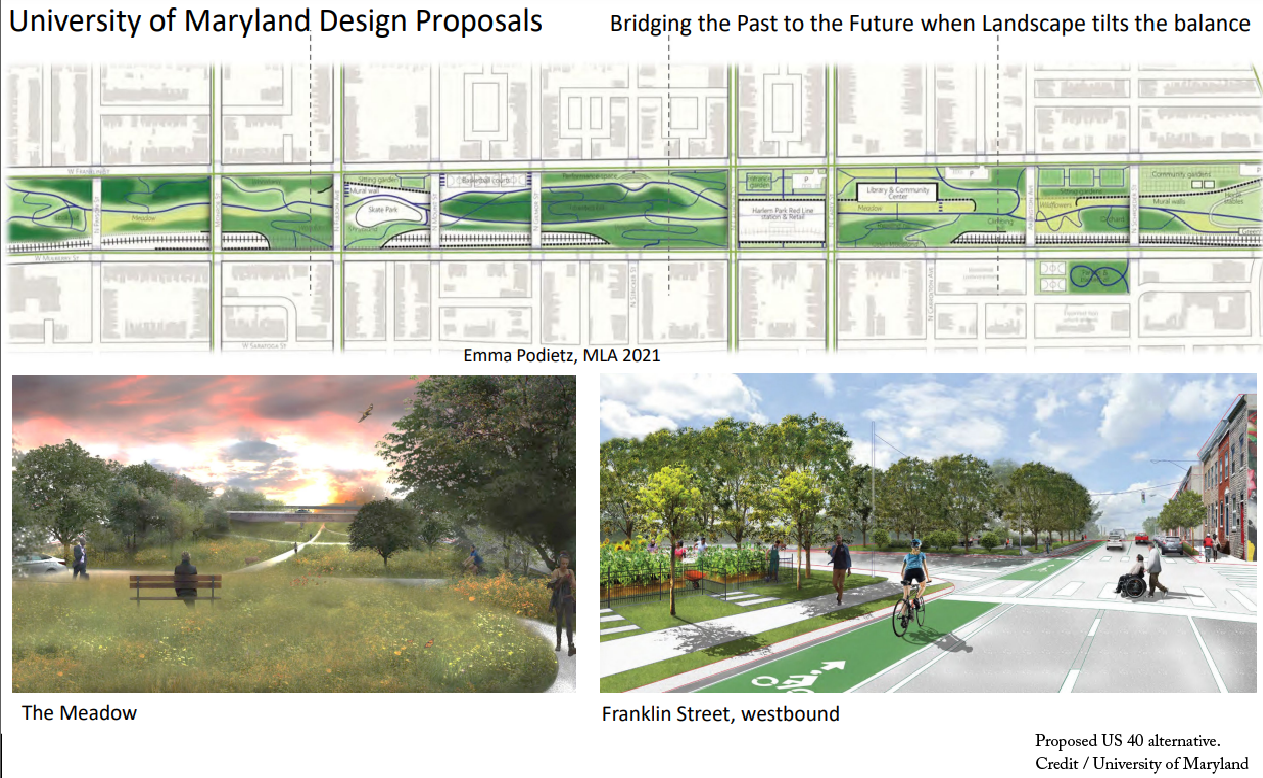History and Context
Baltimore’s infamous “Highway to Nowhere” was intended as a fast-moving connection between downtown Baltimore and the western suburbs via the beltway (I-695) and I-70 requiring the demolition of private homes and active businesses in the historically African American community of West Baltimore on the city’s west side. Before it could advance further, construction was stopped by environmental advocates and empowered community members and only a 1.4-mile stretch of Route 40 was constructed, resulting in the displacement of approximately 1,500 residents of West Baltimore. Roughly 50 years later, the Highway to Nowhere remains both a physical barrier and scar in the community that has struggled with the injustices of segregation, property devaluation, unfair eminent domain, and intrusive highway construction as “urban renewal.” As Baltimore lost its manufacturing base in the 1970‘s and 1980’s, the neighborhoods north and south of the Highway to Nowhere faced city-wide job losses, depopulation, abandoned homes, and, in the early 2000’s, financially devastating subprime mortgage lending practices.
Proposal
Baltimore’s Department of Planning and Department of Transportation have been working closely with the West Baltimore neighborhood communities since 2009 when the city proposed a new east-west 14.5-mile mass transit rail line (the Red Line), using the “Highway to Nowhere” for the westernmost alignment and proposing two local stations at Harlem Park and the West Baltimore MARC Station. The Red Line was scrapped in 2015 but now, with the availability of funding through the federal Reconnecting Communities Pilot Program, the city is revisiting the results of those community outreach efforts and is again engaging the community to discuss the future of the highway.
Current Plans
West Baltimore United received $2 million from US DOT's Reconnecting Communities Pilot Program grants to study the possibility of removing, retrofitting, or modifying the impacts caused by the construction of the US 40 Expressway. This planning grant will reconnect historically Black communities by addressing inequities and improving safety, access, opportunity, and innovation in West Baltimore. Partnerships and support for this project include transit providers, environmental agencies, local elected officials, and non-profit representation. The planning process is a community-driven vision with focus on community stabilization policies related to both affordable housing, community benefits agreements, disadvantaged/minority/woman owned business enterprise goals for projects, and more.



















